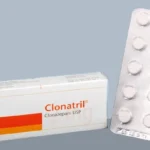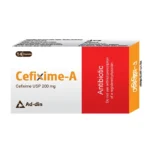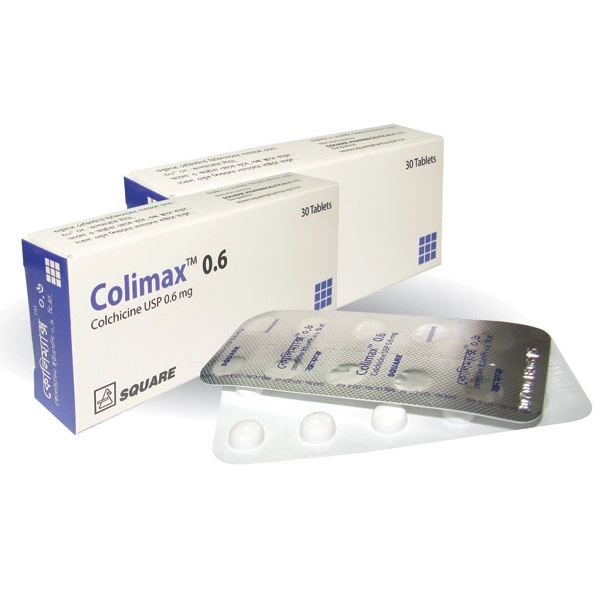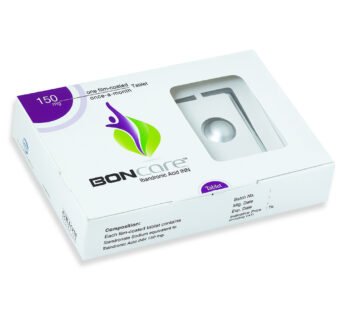Colimax 0.6 mg
Description
Indications
Colimax is indicated for the treatment of acute gout flares. It is also prescribed for Familial Mediterranean Fever (FMF) in adults and children aged four years and older.
Description Colimax is an FDA-approved medication used to prevent and treat acute gout attacks. Gout occurs due to the deposition of uric acid crystals in the joints, triggering an immune response. White blood cells migrate to the affected areas, attempting to eliminate these crystals. This process leads to the release of lactic acid and pro-inflammatory enzymes, which cause pain and swelling. Colimax works by preventing the migration of white blood cells to the inflamed area, thereby reducing pain and inflammation.
Pharmacology An acute gout attack is triggered by an inflammatory reaction to monosodium urate crystals deposited in the joint tissues due to excessive uric acid levels. White blood cells migrate to the affected areas and engulf the crystals, leading to the release of lactic acid and inflammatory enzymes, which result in severe pain, redness, and swelling. The presence of lactic acid lowers the local pH, further promoting uric acid crystallization.
Colchicine, the active ingredient in Colimax, inhibits the phagocytosis of uric acid crystals by white blood cells and directly reduces lactic acid production. This action helps break the cycle of crystal deposition and inflammatory response that sustains acute gout attacks.
When taken orally, Colchicine reaches peak plasma concentration (Cmax) within 1 to 2 hours. It has a mean volume of distribution of approximately 5 to 8 L/kg and binds minimally (about 39%) to serum albumin. Colchicine is metabolized by the CYP3A4 enzyme into its metabolites, 2-O-demethylcolchicine and 3-O-demethylcolchicine, which remain at low plasma concentrations (less than 5% of the parent drug). After multiple oral doses, the mean elimination half-life of Colchicine is approximately 26.6 to 31.2 hours.
Dosage & Administration
For acute gouty arthritis:
- Initial dose: 1 to 1.2 mg (two 0.5 mg or two 0.6 mg tablets) every 2 hours until pain and inflammation subside.
- The total dose required to control an attack typically ranges from 4 to 8 mg.
- Pain and swelling usually decrease within 12 hours and resolve within 24 to 48 hours.
- A minimum three-day interval is recommended between courses to prevent cumulative toxicity.
For prophylaxis during symptom-free periods:
- To reduce attack frequency and severity, colchicine may be taken continuously.
- For patients experiencing less than one attack per year: 0.5 or 0.6 mg daily, three to four days a week.
- For those with more than one attack per year: 0.5 or 0.6 mg daily.
- Severe cases may require two or three 0.5 mg or 0.6 mg tablets daily.
For surgical prophylaxis in gout patients:
- Even minor surgeries may trigger a gout attack in affected patients.
- Recommended dosage: One 0.5 mg or 0.6 mg tablet three times daily, starting three days before surgery and continuing for three days after surgery.
Interaction Colimax should not be co-administered with strong P-glycoprotein (P-gp) and CYP3A4 inhibitors (e.g., clarithromycin, cyclosporine) as these can significantly alter colchicine concentrations in the body.
Contraindications Colimax is contraindicated in patients with renal or hepatic impairment who are also taking P-gp or strong CYP3A4 inhibitors.
Side Effects Common side effects include:
- Gastrointestinal issues such as diarrhea and throat pain.
- Hematologic disorders, including myelosuppression, leukopenia, granulocytopenia, thrombocytopenia, and aplastic anemia.
Pregnancy & Lactation
- Pregnancy Category C: There are no adequate and well-controlled studies in pregnant women.
- Colchicine is excreted into breast milk, so caution is advised when administering it to nursing mothers.
Use in Special Populations
- Pediatric Use: Gout is uncommon in children. The safety and efficacy of Colimax in pediatric patients have not been well established.
Overdose Effects
- The exact toxic dose of Colimax is unknown, but fatalities have been reported with doses as low as 7 mg over four days.
- Patients who consumed less than 0.5 mg/kg generally exhibited mild symptoms, such as gastrointestinal discomfort, while those ingesting 0.5 to 0.8 mg/kg experienced severe effects, including myelosuppression.
Therapeutic Class Drugs used in the treatment of gout.
Storage Conditions
- Store below 30°C.
- Protect from light and moisture.
- Keep out of reach of children.
Additional information
| Weight | 0.15 g |
|---|








Reviews
There are no reviews yet.